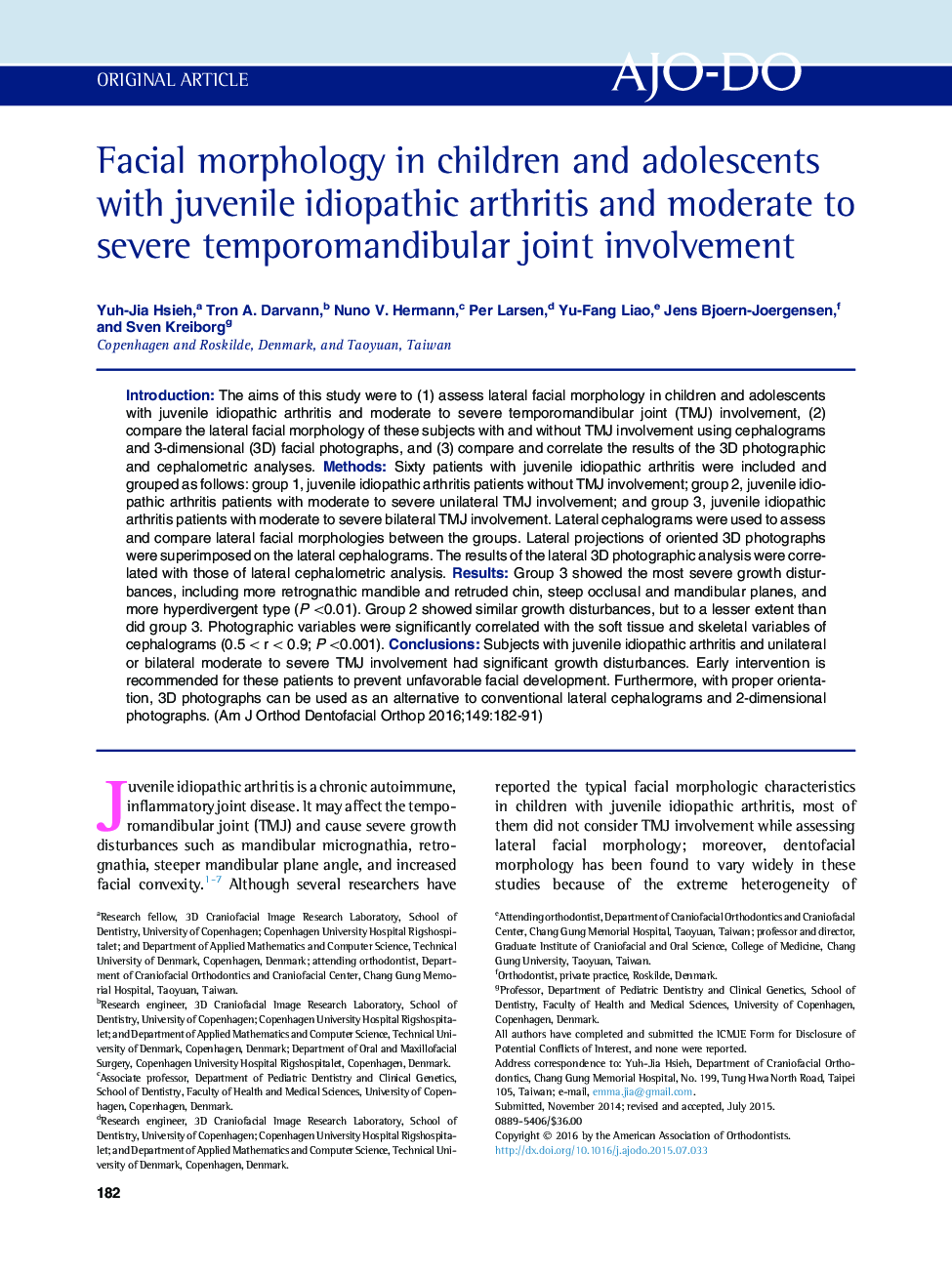| Article ID | Journal | Published Year | Pages | File Type |
|---|---|---|---|---|
| 3115717 | American Journal of Orthodontics and Dentofacial Orthopedics | 2016 | 10 Pages |
•We evaluated lateral facial morphology of juvenile idiopathic arthritis patients with moderate and severe TMJ involvement.•Differences in their lateral facial morphologies between unilateral and bilateral TMJ involvement were also assessed.
IntroductionThe aims of this study were to (1) assess lateral facial morphology in children and adolescents with juvenile idiopathic arthritis and moderate to severe temporomandibular joint (TMJ) involvement, (2) compare the lateral facial morphology of these subjects with and without TMJ involvement using cephalograms and 3-dimensional (3D) facial photographs, and (3) compare and correlate the results of the 3D photographic and cephalometric analyses.MethodsSixty patients with juvenile idiopathic arthritis were included and grouped as follows: group 1, juvenile idiopathic arthritis patients without TMJ involvement; group 2, juvenile idiopathic arthritis patients with moderate to severe unilateral TMJ involvement; and group 3, juvenile idiopathic arthritis patients with moderate to severe bilateral TMJ involvement. Lateral cephalograms were used to assess and compare lateral facial morphologies between the groups. Lateral projections of oriented 3D photographs were superimposed on the lateral cephalograms. The results of the lateral 3D photographic analysis were correlated with those of lateral cephalometric analysis.ResultsGroup 3 showed the most severe growth disturbances, including more retrognathic mandible and retruded chin, steep occlusal and mandibular planes, and more hyperdivergent type (P <0.01). Group 2 showed similar growth disturbances, but to a lesser extent than did group 3. Photographic variables were significantly correlated with the soft tissue and skeletal variables of cephalograms (0.5 < r < 0.9; P <0.001).ConclusionsSubjects with juvenile idiopathic arthritis and unilateral or bilateral moderate to severe TMJ involvement had significant growth disturbances. Early intervention is recommended for these patients to prevent unfavorable facial development. Furthermore, with proper orientation, 3D photographs can be used as an alternative to conventional lateral cephalograms and 2-dimensional photographs.
